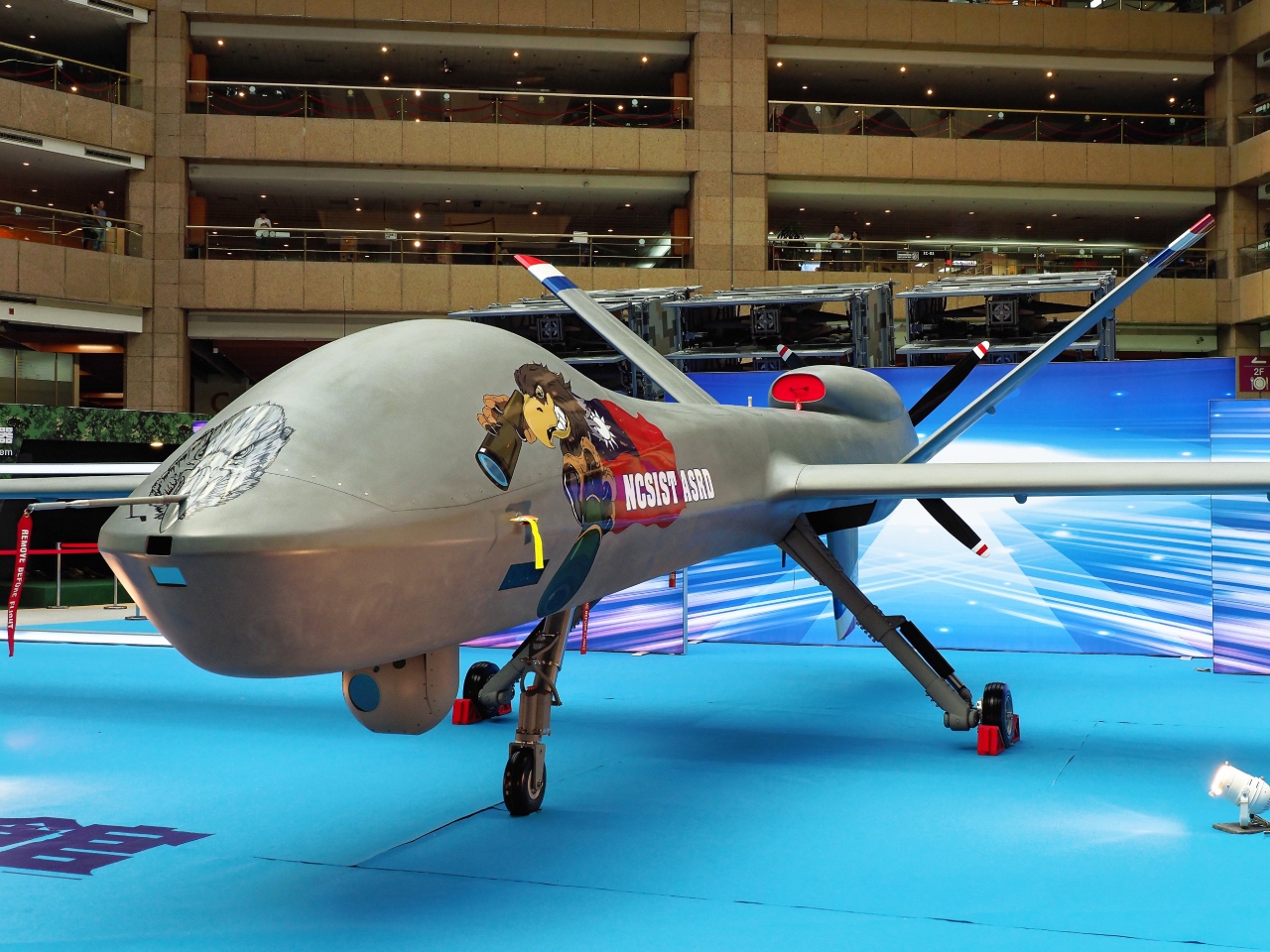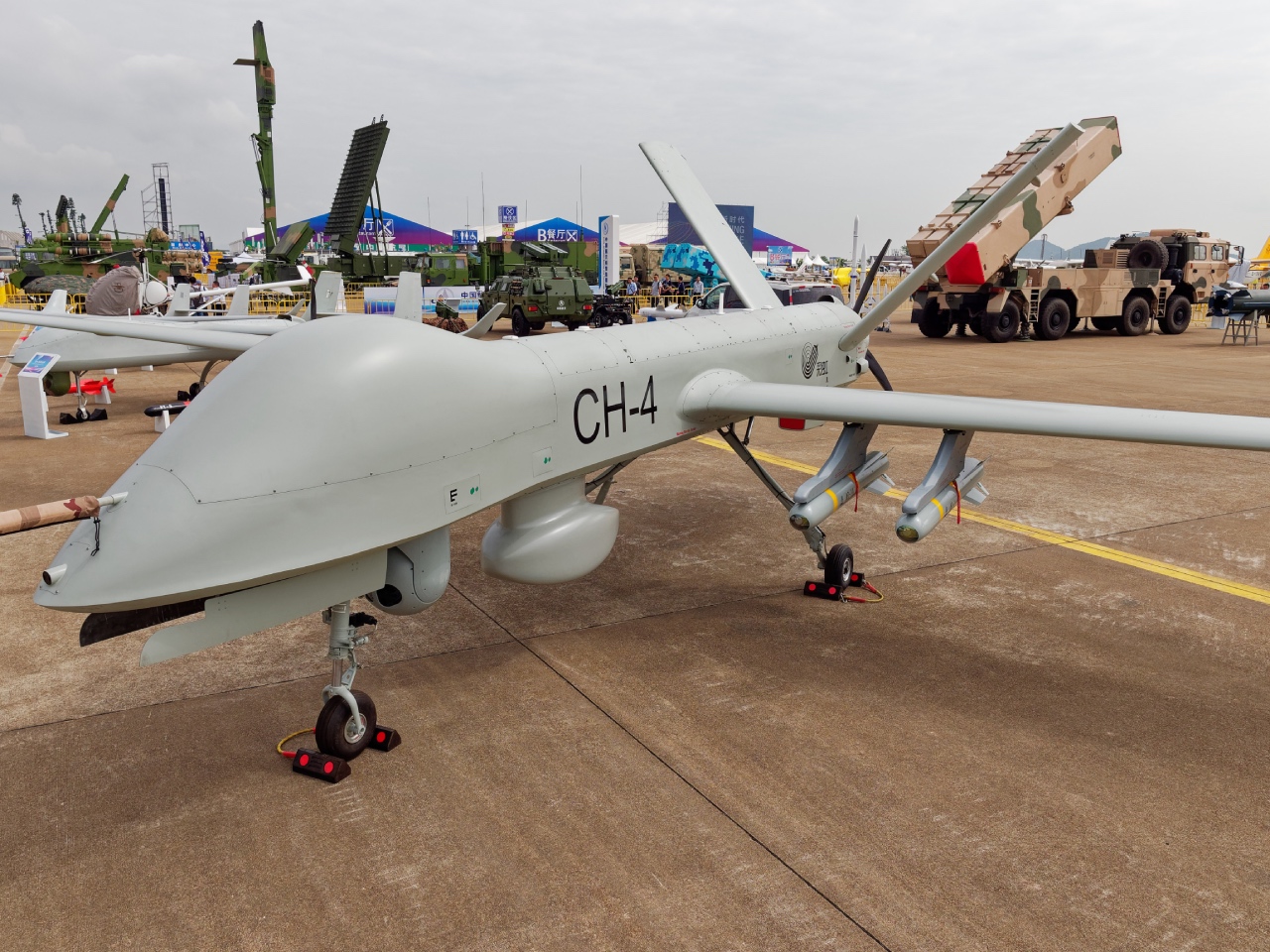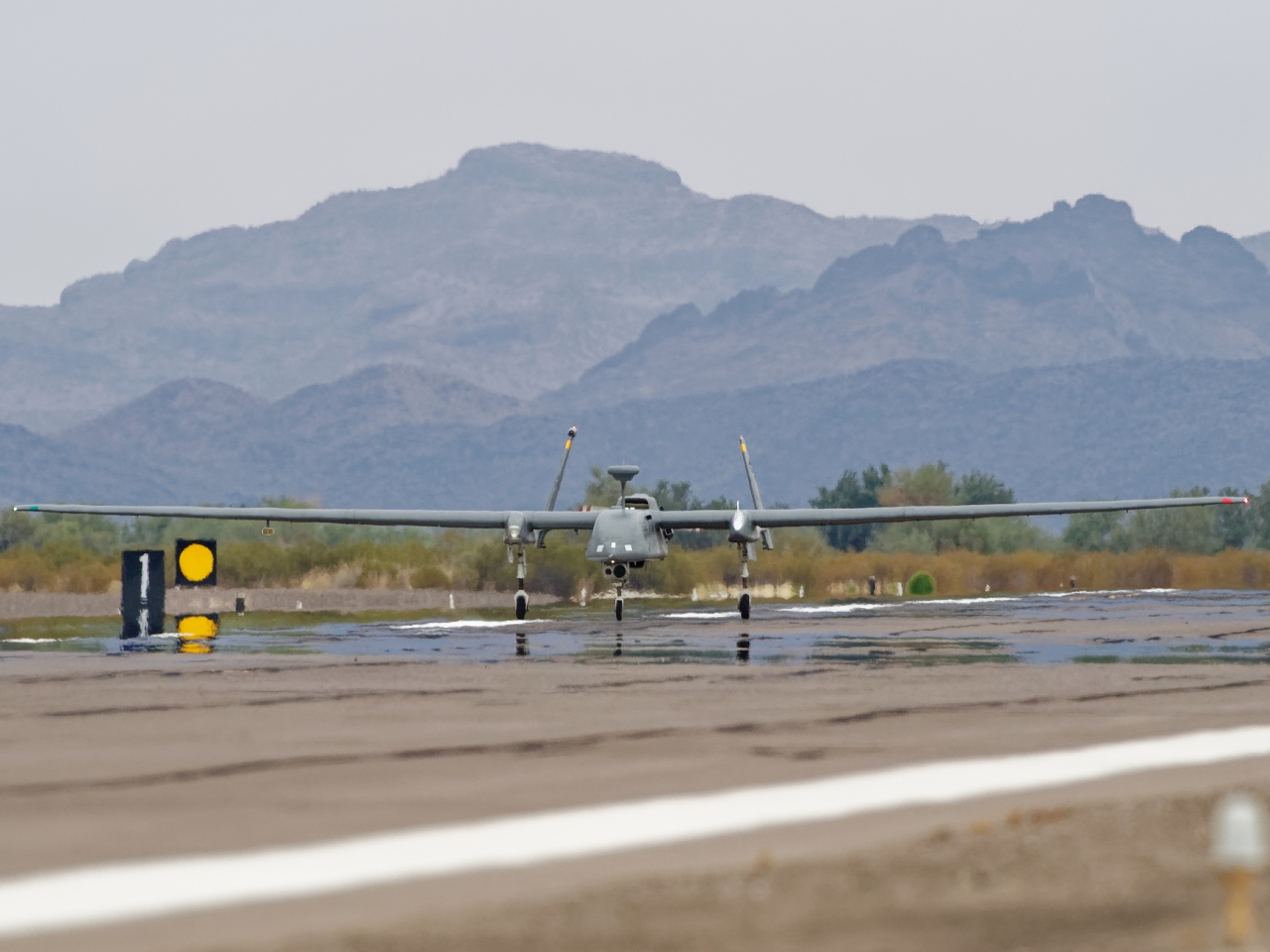
Where China is growing its unmanned aerial vehicle fleet, nations across Asia Pacific are finding budgets too for these more strategic assets.
Military forces are rapidly adopting larger and more capable unmanned aerial vehicles (UAVs) as they modernise their force structures to better deal with ever more capable adversaries.
While many of these forces have been long time operators of tactical-class and smaller types of UAVs, it was only in recent years that interest in medium- and high-altitude long endurance (MALE and HALE)-class has grown because of the increased complexity and costs in acquiring and operating larger UAVs.
Despite their lack of survivability in contested airspace, the demonstrated ability of MALE-class and better UAVs for both intelligence, surveillance, and reconnaissance (ISR) and air-to-surface strikes as demonstrated in the Middle East and Pakistan over the past 20 years has nevertheless captured the attention of several regional countries, especially those with extensive land borders or maritime territory to secure. What makes the platforms attractive is their ability to travel long distances and loiter for extended periods while carrying multiple types of sensor and mission equipment.
China has clearly emerged as both the leading regional developer and adopter of MALE and HALE UAVs, having produced a large variety and quantity of platforms not just for the People’s Liberation Army (PLA), but also supplying these and associated technologies to military forces in Central and Southeast Asia as well as the Middle East, which are unable to acquire higher-end UAV capabilities from the United States and Europe due to export restrictions such as the Missile Technology Control Regime (MTCR).
At least 14 countries across the world have ordered or taken delivery of a range of armed MALE UAV platforms within the past decade, with the list expected to grow as Beijing’s economic and military influence continues to expand.
China’s impressive indigenous UAV industry is being led by subsidiaries of state-owned defence primes such as the Aviation Industry Corporation of China (AVIC) and China Aerospace Science and Technology Corporation (CASC), which have developed successful MALE-class platforms such as the in-service ‘Caihong’ (Rainbow, CH) 4 and 5 and ‘Yilong/Wing Loong’ (Pterodactyl) I and II UAVs and HALE-class ISR platforms such as the Wuzhen-7 ‘Xianglong’ (WZ-7 Soaring Dragon).
The Wing Loong I and II UAVs are presently the mainstay MALE-class armed reconnaissance platforms for the PLA Air Force (PLAAF), and are officially designated the Gongji-I and Gongji-II (GJ-1 and GJ-2). The GJ-1 was first unveiled to the public at Airshow China 2014 and was seen armed with two China North Industries Corporation (Norinco) Hongjian-10 (HJ-10) anti-armour missiles alongside a range of other munitions.
The Wing Loong II bears a strong resemblance to the US-made General Atomics Aeronautical Systems (GA-ASI) MQ-9 Reaper, with its low-wing monoplane airframe design with a prominent V-tail and ventral fin. Like its sister platform, the Wing Loong II has also been acquired for PLAAF service and designated the GJ-2.
China appears to be testing a new MALE-class reconnaissance UAV for long-range maritime ISR operations. In August 2021 the Japanese Ministry of Defense’s (MoD’s) Joint Staff Office (JSO) announced that the Japan Air Self-Defense Force (JASDF) had intercepted a new air vehicle that approached Japanese airspace, flying over the East China Sea in the direction of the Ryukyu Island chain.

The JASDF has also visually identified the new UAV as the TB001 with a photograph released by the MoD on 25 August clearly showing the type’s distinctive twin-boom airframe design and port side forward-mounted turboprop propellers, marking the first instance in which the type had been intercepted near Japan. Another image and flight tracking details released on 26 August showed another TB001 flying a different track.
The TB001 is developed by the privately owned Sichuan Tengden Technology Company (Tengden) – albeit believed to be linked to AVIC’s 611 Research Institute – and is also known locally as the ‘Twin-tailed Scorpion’, with first flight achieved in March 2019. It is also not known if the intercepted TB001 has already entered service with the PLA or is still undergoing operational trials, although it is clear that the air vehicles were not on a civilian mission judging from the deliberate flights near Japanese airspace.
According to company specifications, the TB001 has maximum take-off weight (MTOW) of 6,173 pounds (2,800 kilogrammes), as well as an overall wingspan of 65 feet (20m). The twin-turboprop engines enable the air vehicle to operate at altitudes of up to 26,200 feet (8,000m), with a maximum range of 3,240 nautical miles (6,000 kilometres and endurance of 35 hours when carrying a 2,200lb (1,000kg) payload.
Tengden has also developed a three-engined variant called the TB001A with an increased MTOW of 7,000lb (3,200kg), featuring a third engine has been integrated to the rear of the main fuselage pod providing additional thrust that enables the air vehicle to reduce its take-off distance to 1,640ft (500m) at full load and climb at a faster rate of 10 metres per second (m/s).
Previous Chinese military UAVs encountered by the JASDF at such extended distances from the mainland have largely comprised BZK-005 reconnaissance UAVs manufactured by the Beijing-based Beihang UAS Technology and widely adopted by the PLA’s air, ground, and naval services. The BZK-005 is also a twin-boom aircraft and known locally as the ‘Changying’ (Long Eagle) and has an MTOW of 2,750lb (1,250kg) and payload capacity of 330lb (150kg).
The PLAAF has been operating the HALE-class WZ-7 Soaring Dragon for over five years and has been seen deployed to airbases including Dingxin, Lingshui, Malan, Wuwei, Shigatse, Suixi, and Yishuntun.
Produced by AVIC subsidiary Guizhou Aviation Aircraft Corporation, the WZ-7 was first shown to the public as a concept model at Airshow China 2006, but the actual in-service platform was recently unveiled in September 2021. The type is believed to be the PLAAF’s primary high-altitude unmanned platform for reconnaissance operations near strategically important locations.
The 45ft (14m) long WZ-7 has a 75ft (23m) wingspan and is believed to have an operational ceiling of 59,000ft (18,000m) and cruise speeds of around 404 nm/h (750km/h). It is also understood to possess a range of 3780nm (7,000km) while carrying a maximum mission payload of up to 1,433lb (650kg).
Taiwan
Across the strait, Taiwan’s Republic of China Air Force (RoCAF) has been trialling a new type of indigenously developed MALE-class ISR UAV called ‘Teng Yun’ (Cloud Rider), which is being developed by the state-owned National Chung-Shan Institute of Science and Technology (NCSIST).
According to official specifications, the Teng Yun UAV is constructed from an all-composite airframe that measures 26ft (8m) long with a wingspan of 59ft (18m). First unveiled at the 2015 edition of the TADTE defence exhibition in Taipei, the type offers a claimed operating radius of over 540nm (1,000km) with a flight endurance of 24 hours and ceiling of 25,000ft (7,620m).

NCSIST subsequently highlighted a larger and more capable ‘second generation’ Teng Yun prototype at the same event four years later. The institute has yet to disclose detailed specifications of this new model, although it is believed that the latest design is powered by a Honeywell Aerospace TPE331 turboprop engine that offers a higher output than the original Teng Yun’s piston engine, enabling NCSIST engineers to increase the air vehicle’s size and payload carrying ability.
Local media reported that three Teng Yun UAVs – air vehicles MU1611, MU1612, and a second-generation model – entered RoCAF operational testing in October 2020 and have been deployed to Zhihang Air Base since January 2021. It was earlier reported that at least 10 Teng Yun platforms will be manufactured from 2024 at a cost of approximately $127 million, which will be operated by a newly formed squadron.
However, an early model Teng Yun UAV was destroyed in a crash after taking off from Zhihang Air Base for a routine flight training mission in February 2021. NCSIST stated that the air vehicle reported “abnormalities in the control system” and initiated an emergency landing in Taitung Forest Park. News footage revealed that the destroyed UAV had been air vehicle serial number MU1611.
Taiwan has also expressed interest in US-made armed reconnaissance UAVs, with the US State Department approving the sale of four ‘weapons ready’ General Atomics (GA-ASI) MQ-9B SeaGuardian in November 2020. The US Defense Security Cooperation Agency (DSCA) announced that the proposed sale of the four SeaGuardian UAVs and associated equipment is expected to be worth as estimated $600 million and will performed via the Foreign Military Sales (FMS) mechanism.
“This proposed sale will improve the recipient’s capability to meet current and future threats by providing timely intelligence, surveillance, and reconnaissance (ISR), target acquisition, and counter-land, counter-sea, and anti-submarine strike capabilities for its security and defence,” the DSCA stated. “The capability is a deterrent to regional threats and will strengthen the recipient’s self-defense.”
Besides the four UAVs, Taiwan also requested two static and two mobile ground control stations (GCSs), Leonardo SAGE 750 electronic surveillance measures (ESM) systems, Raytheon SeaVue X-Band maritime radars, and L3Harris Wescam MX-20 electro-optic/infrared (EO/IR) sensors. The US government will also provide contractor engineering, technical, and logistics support services, as well as other related elements of logistical and programme support.
South Korea and Japan
South Korea appears close to fielding an indigenously developed multirole MALE UAV after over a decade of development by Korean Air Aerospace Division (KAL-ASD) on behalf of the Korean Agency for Defense Development (ADD).
Known as the KUS-FS, the type is being developed for the Republic of Korea Air Force (RoKAF) at a programme cost of approximately $404 million and features a length and wingspan of 42ft (13m) and 82ft (25m), respectively. The air vehicle is understood to be powered by a 1,200hp turboprop engine that enables it to reach a service ceiling of 42,600ft (13,000m) and conduct operations in excess of 24 hours.
KAL-ASD is responsible for the KUS-FS platform development and production, while Hanwha Corporation is developing its EO/IR system. LIG Nex1 is developing a new synthetic aperture radar (SAR) and is also partnering with KAL-ASD on the air vehicle’s avionics systems.
First flight was achieved in 2012, with development understood to be completed by the end of 2018 and initial examples having entered extensive operational test and evaluation (OT&E) with the RoKAF since 2019. An armed variant of the KUS-FS is also expected with the prototype KUS-FS equipped with four underwing hardpoints and has already conducted mock weapons carriage and release tests during its extensive flight trials.

In March 2021, the South Korean Ministry of National Defense (MND) stated its desire to acquire an indigenously developed MALE UAV for the Republic of Korea Army (RoKA) Ground Operations Command (GOC). MND officials said in early March 2021 that it is seeking around 10 MALE-class UAVs and associated ground support equipment, representing up to three complete systems, to boost the RoKA’s long-range airborne surveillance capabilities.
Further work is required to modify the baseline KUS-FS fuselage and mission systems to reduce its take-off and landing distance and extend its sensor detection range. It is expected that additional research and development (R&D) work will occur from 2022 to 2025 with production of the RoKA-variant commencing from 2026.
The RoKAF also operates four HALE-class Northrop Grumman RQ-4 Block 30 Global Hawks along with two ground control systems (GCS) and two spare engines under a $657 million FMS contract. All four air vehicles were delivered by September 2020 and are operated by the newly set up 39th Reconnaissance Squadron at Jungwon Air Base.
Meanwhile, Northrop Grumman announced in April 2021 that the first of three RQ-4 Global Hawk Block 30 UAVs worth an estimated $1.2 billion being built for the Japan Air Self-Defense Force (JASDF) had conducted its maiden flight from its Palmdale, California facility.
Contract work is expected to be completed by 1 September 2022. Once delivered, the UAVs will be operated from Misawa Air Base in northern Japan. Tokyo had requested that each aircraft be fitted with Raytheon Intelligence and Space’s Enhanced Integrated Sensor Suite (EISS), which comprises an EO/IR sensor, synthetic aperture radar (SAR), and ground-moving-target indicator elements designed to scan large geographic areas and produce high-resolution reconnaissance imagery.
Southeast Asia
Although the adoption of MALE-class and larger UAVs has been slower across Southeast Asian countries compared with their East Asian counterparts, there is nevertheless an observable uptake in the fielding of such capabilities, with the armed forces of countries such as Indonesia, the Philippines, Singapore, Thailand, and Vietnam developing or acquiring MALE-class UAVs.
For example, the Indonesian Air Force (TNI-AU) gained its first MALE UAV capabilities in late 2019 following the delivery of six satellite communications (satcom)-equipped CASC CH-4B armed reconnaissance air vehicles. These were publicly displayed in TNI-AU colours for the first time in October 2019 during a parade commemorating the 74th anniversary of the Indonesian Armed Forces.
The CH-4Bs have been assigned to the TNI-AU’s primary UAV unit – Skuadron Udara 51 (Aviation Squadron 51) – which is based at Supadio Air Base in Pontianak, near West Kalimantan. For years it quietly operated Israeli-made Aerostar tactical UAVs for surveillance missions before the arrival of the Chinese-made platforms.

Like China and Taiwan, Indonesia has launched an indigenous MALE UAV development programme with state-owned aerospace company PT Dirgantara Indonesia (PTDI). It revealed its armed reconnaissance Elang Hitam (Black Eagle) UAV prototype to the public at its Bandung headquarters on 30 December 2020.
According to PTDI’s specifications, the Black Eagle UAV has a wingspan of 52.5ft (16m), a length of 28ft (8.65m), and a 8.5ft (2.6m)-high fuselage. PTDI also states that the Black Eagle has a MTOW of 2,866lb (1,300kg) and can carry up to 926lb (420kg) of fuel. It will be equipped with a 4-stroke engine that produces up to 150hp, which the company hopes will enable it to attain an operational ceiling of 23,600ft (7,200m).
The fully loaded air vehicle – carrying up to 660lb (300kg) of mission equipment and/or weapons – will have a 135nm (250km) command radius and will be capable of taking off from a 2,300ft (700m) long runway and staying aloft for up to 30 hours when operating at cruise speeds.
The Black Eagle is being developed by a local consortium led by PTDI and comprising the MoD and TNI-AU, the Agency for the Assessment and Application of Technology (BPPT), the National Institute of Aeronautics and Space (LAPAN), and other state-owned firms, including defence electronics developer PT Len.
The consortium also plans to install wing-mounted hardpoints to accommodate various external payloads, including weapons, by 2023. Local media has reported that a possible candidate for weapon integration could be PTDI’s 70mm folding-fin aerial rocket (FFAR) system, which comprises four conventional unguided rockets each equipped with a single solid-propellant motor and fitted with four flip-out tailfins to improve ballistic stability.
Besides Indonesia, other Southeast Asian operators or MALE-class UAVs include Singapore and the Philippines.
The Republic of Singapore Air Force (RSAF) took delivery of an undisclosed number of Israel Aerospace Industries (IAI) Heron 1 UAVs. The service introduced the type in May 2012 and declared it fully operations in March 2017. These are operated by the 119 and 128 Squadron and are considered the service’s primary unmanned airborne intelligence, surveillance, target acquisition, and reconnaissance (ISTAR) platform.

In October 2019, the existence of an upgraded RSAF Heron 1 UAV featuring a bulged belly pod housing an unknown payload – likely a SAR system – was inadvertently leaked by a local news agency covering an overseas exercise in the United States.
The Philippine Air Force (PAF) has also opted for an Israeli-made platform with the Elbit Systems Hermes 900. The type is the first MALE-class UAV platform to be acquired by the Philippines, featuring a MTOW of approximately 2,650lb (1,200kg) and a 50ft (15m) wingspan. Nine of these air vehicles were acquired under a $153 million package announced in October 2019, and are believed to have been delivered by the end of 2020.
by JR Ng











